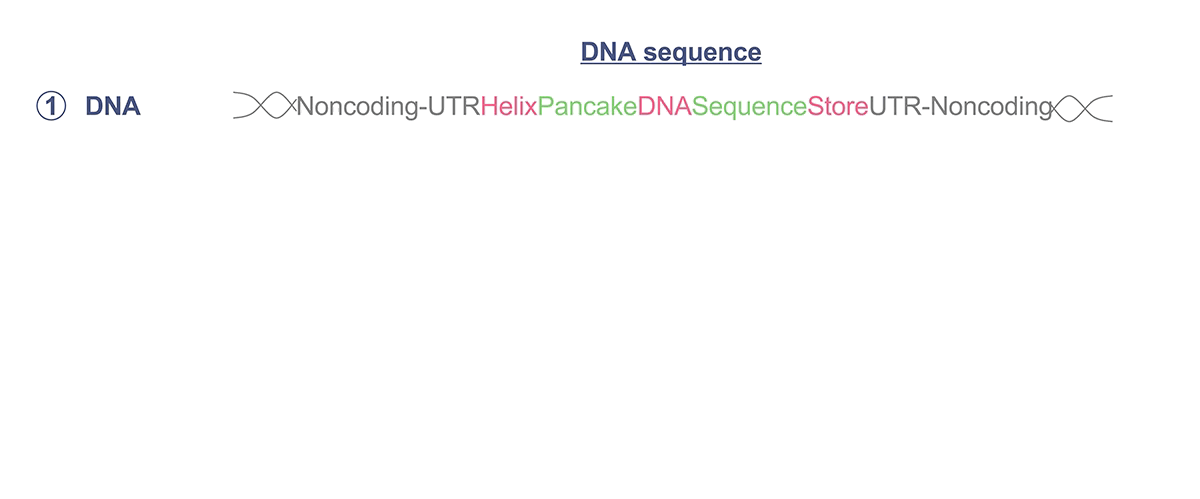You’ve heard of the genome. But what’s the exome?

You can probably guess that a “DNA test” is a test that looks at your DNA—but do you know what DNA?
Contrary to popular belief, genetic tests rarely look at the whole genome, which is all of the DNA in a cell. Instead, testing is commonly limited to a small subset of that DNA. But how come? If you’re already testing the DNA, why not just sequence all of it? There are a number of reasons, actually!
Let’s briefly travel back to 1977
To learn why, let’s briefly travel back to 1977. That’s when researchers Phillip Allen Sharp and Richard J. Roberts figured out that our DNA is subdivided into neighborhoods, of sorts—regions of DNA that serve distinct purposes. We already knew that a small portion of the genome contains information which instructs cells on how to build proteins, but Sharp and Roberts showed that these so-called coding regions are subdivided into blocks known as exons and introns.
We’ll get to exons and introns in a moment, but first, we have to discuss the organization of DNA to explain why some portions of it have been historically considered more important than others. DNA is made up of four basic chemical letters, A, C, G, and T. Strung together, DNA spells out instructions for how to build a living organism, one protein at a time. This critical information is stored in the cell’s nucleus, a region of all mammalian cells that’s closed off to the rest of the cell and allows the DNA to be tightly regulated. However, locking DNA away like this means that its messages can’t reach the rest of the cell. This problem is overcome through the use of a messenger system: RNA. Ribonucleic acid (RNA) is similar to DNA but is shorter lived, single stranded, and significantly less stable—kind of like Snapchat for DNA.
To build proteins, cells transcribe the information coded within DNA into messenger RNA (mRNA) which is then exported from the nucleus, read, and translated into a protein. So the discovery made by Sharp and Roberts started with the observation that, somewhere along mRNA’s journey, it consistently loses portions of its message. After careful experimentation, they realized the loss of RNA wasn’t an accident; it was a critical feature of this messaging system. It was how the process was supposed to work.
As RNA prepares to leave the nucleus, it is subject to a process known as splicing. Splicing cuts out portions of the premature messenger RNA (pre-mRNA) to build a more streamlined message. The removed portions of the pre-mRNA are called introns. What remains are blocks of mRNA known as exons and it’s these parts of the RNA that provide the final instructions for building a protein. Once connected, the final mRNA sequence contains a coherent message flanked by regulatory regions of RNA (known as the untranslated regions, or UTR). These UTR portions don’t actually code for anything, but rather serve as regulatory units that instruct cells where to start and stop reading the RNA when making a protein. This is the general process of how a cell communicates messages from the DNA to the rest of the cell.

Let’s imagine a fictional protein called “HelixDNAStore.” Protein coding regions (red) are exons. Within the gene, there are introns (green) which aren’t included in the final mRNA. If they were included, you can imagine how the sentence (or protein) would be different.
So, back to our questions: why don’t most DNA tests sequence the whole genome, and what do they test for? Most of the time, when people order genetic tests, it’s their exomic DNA that is being tested. There are technical and practical reasons for this, not the least of which is our lack of knowledge about how introns and other noncoding sequences can affect human physiology and health. Because introns don’t contribute to the final protein building code, they were once called “junk DNA.” The “junk” category included introns and other portions of the DNA that appeared to have no function. However, decades of research have shown that portions of the “junk” DNA actually help regulate human health in ways that we don’t yet fully understand.
Some introns serve as regulatory regions of DNA for other completely different and unrelated DNA sequences. Lactose intolerance is a good example of this. The ability to digest lactose is determined by a protein known as lactase, made from the LCT gene. The production of lactase is controlled by regulatory stretches of DNA that determine when, and to what extent, the gene will be expressed. Interestingly, a neighboring gene known as MCM6 plays a critical role in regulating LCT. An intronic region of the MCM6 gene contains one of the regulatory sequences controlling LCT gene expression. Some people inherit an MCM6 gene that contains a single base change within this intron that can influence whether a person is lactose intolerant. As scientists discover new functions for regions of noncoding DNA, they move that sequence out of the “junk” category.
We know less about these regions compared to exomic DNA
The complex ways in which noncoding DNA can regulate human health are only just being discovered. Accordingly, we know less about these regions compared to exomic DNA. This is part of the reason why most tests look at exons rather than introns. So—at the moment, anyway—there are fewer insights that can be learned from introns and noncoding DNA. While we know less about these stretches of the genome, we have learned that the intronic regions of DNA can be used to gain or support some valuable DNA-based insights, like ancestry.
Some genetic tests do explore exons, introns, and other noncoding regions. Whole-genome sequencing encompasses the majority of a person’s DNA, but much of it can’t be meaningfully interpreted due to technical issues. This method of sequencing is also significantly more expensive. Because the majority of insights are derived from a person’s exome—and the fact that it is considerably less expensive to sequence—many sequencing products use whole exome sequencing, which only looks at a person’s exons.
At Helix, we have created a hybrid called Exome+ that enables us to provide insights derived from a person’s exome in addition to many noncoding regions. Our sequencing platform looks at the exome and other informative regions throughout the genome that may provide interesting or useful information. Because of the additional coverage we get from Exome+ versus older assays, Helix customers can purchase dozens of products across multiple categories, with much more to come over time—all from a single DNA test. (This is what we call “sequence once, query often.”)
This is an especially exciting time in genetics, because technologies like Exome+ represent a sea change in the accessibility of highly detailed DNA insights. The possibilities are endless, and the Helix Store can help you take advantage of everything your DNA has to offer.